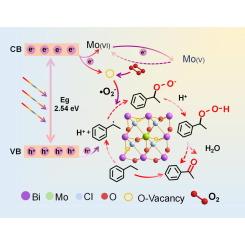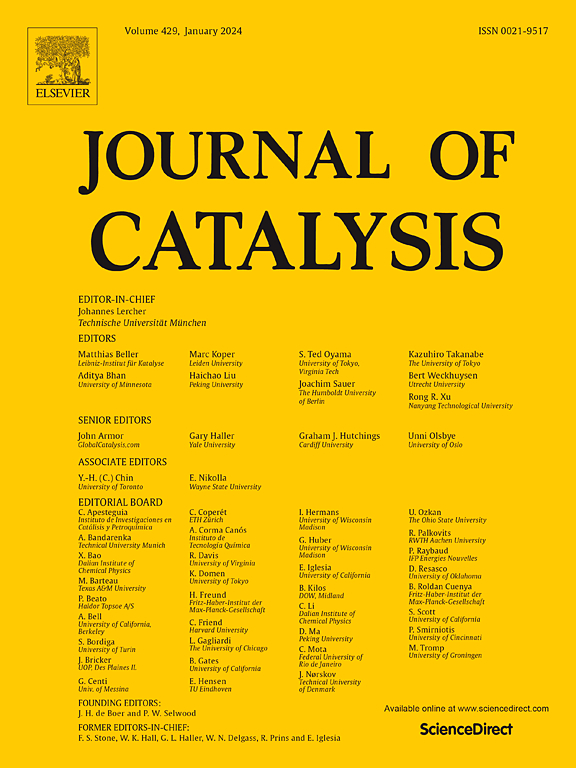Efficient photocatalytic C(sp3)-H oxidation of ethylbenzene enhanced by photochromic Mo-doped BiOCl ultrathin nanosheets
IF 6.5
1区 化学
Q2 CHEMISTRY, PHYSICAL
引用次数: 0
Abstract
The photocatalytic activation of C(sp3)-H bonds has exhibited great potential for producing high-value chemicals. However, the poor charge separation and transfer efficiency as well as limited active sites of semiconductor photocatalysts restrict photocatalytic performance. Herein, we report the photochromic Mo-doped BiOCl ultrathin nanosheets with abundant oxygen vacancies for efficient photocatalytic oxidation of C(sp3)-H of ethylbenzene. Mo-doping effectively extends the light absorption of BiOCl to visible range and empowers BiOCl visible-light-responsive photochromic properties. The photochromic effect induced Mo6+/Mo5+ species could act as electron trapping centers for capturing photogenerated electrons to improve the separation and transfer efficiency of photogenerated charges, and thus promoting the photogenerated holes to oxidize ethylbenzene to its benzyl radicals. The abundant oxygen vacancies in Mo-doped BiOCl ultrathin nanosheets act as active sites for enhancing adsorption and activation of the O2 to O2 − by photogenerated electrons stored at Mo6+/Mo5+ species and oxygen vacancies. The reduction of O2 and oxidation of C(sp3)-H bonds can be effectively accomplished to produce acetophenone. The Mo-doped BiOCl ultrathin nanosheets display an excellent acetophenone production rate of 8033 μmol·g−1·h−1, which is 9 times higher than that of undoped BiOCl. This work shows that photochromic catalysts would provide a new way to design efficient photocatalysts for activation of C(sp3)-H bonds.
− by photogenerated electrons stored at Mo6+/Mo5+ species and oxygen vacancies. The reduction of O2 and oxidation of C(sp3)-H bonds can be effectively accomplished to produce acetophenone. The Mo-doped BiOCl ultrathin nanosheets display an excellent acetophenone production rate of 8033 μmol·g−1·h−1, which is 9 times higher than that of undoped BiOCl. This work shows that photochromic catalysts would provide a new way to design efficient photocatalysts for activation of C(sp3)-H bonds.

求助全文
约1分钟内获得全文
求助全文
来源期刊

Journal of Catalysis
工程技术-工程:化工
CiteScore
12.30
自引率
5.50%
发文量
447
审稿时长
31 days
期刊介绍:
The Journal of Catalysis publishes scholarly articles on both heterogeneous and homogeneous catalysis, covering a wide range of chemical transformations. These include various types of catalysis, such as those mediated by photons, plasmons, and electrons. The focus of the studies is to understand the relationship between catalytic function and the underlying chemical properties of surfaces and metal complexes.
The articles in the journal offer innovative concepts and explore the synthesis and kinetics of inorganic solids and homogeneous complexes. Furthermore, they discuss spectroscopic techniques for characterizing catalysts, investigate the interaction of probes and reacting species with catalysts, and employ theoretical methods.
The research presented in the journal should have direct relevance to the field of catalytic processes, addressing either fundamental aspects or applications of catalysis.
 求助内容:
求助内容: 应助结果提醒方式:
应助结果提醒方式:


